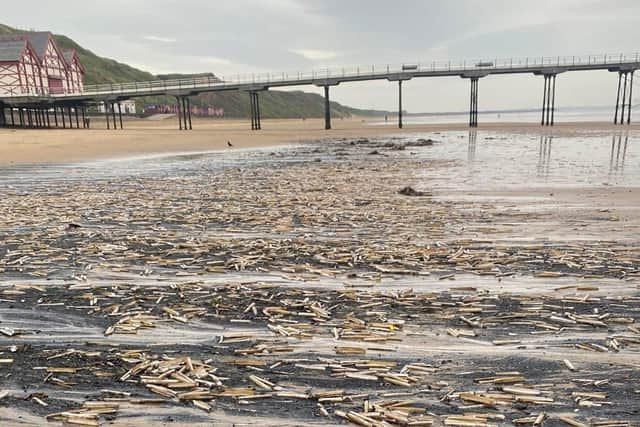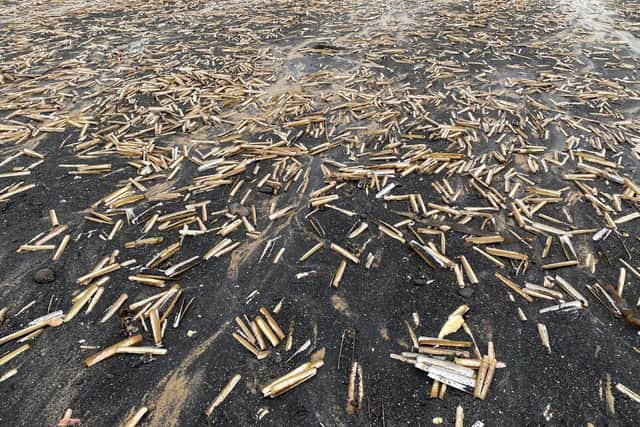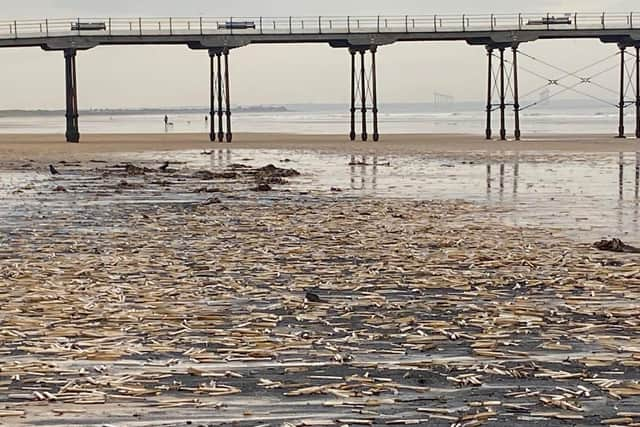Scientist predicts more deaths after latest sea life wash-ups at Saltburn
The most recent event has seen dramatic images of razor shells and sea coal covering Saltburn beach shared widely on social media. Professor Rodney Forster, a marine biologist at the University of Hull, spoke to The Yorkshire Post about the most recent event which is reminiscent of scenes on the same beach two years ago.
Emphasising his evaluation is only of images shared online rather than of field work, Prof Forster says the images appear to show only empty shells, “which suggests natural deaths”.
Advertisement
Hide AdAdvertisement
Hide AdAsked if the excessive presence of sea coal in the images suggests a disturbance to the seabed, Prof Forster agrees: “That’s certainly my view. Razor shells don’t bury themselves very deep, and this may well be the result of the first Autumn storm activity.”


He also shared data of wave height measurements from Whitby - some 15 miles down the coast - in the days leading up to the wash up, which shows large waves preceding the latest event. It also shows the potential for an even bigger wash up next week as larger waves are forecast for this weekend.
The issue of marine deaths on this stretch of coast line has been contentious since three large wash ups beginning in September 2021 saw vast numbers of dead and dying crustaceans come ashore. Dwindling stocks in the wake of these events have nearly wiped out Hartlepool’s potting fleet.
The deaths were initially blamed on an algal bloom, other scientists then proposed the theory of toxic pyridine from years of industry on Teesside being to blame. A Government panel reported at the start of this year that a novel pathogen was the most likely cause, although it qualified this statement by saying it was “as likely as not”.
Advertisement
Hide AdAdvertisement
Hide AdProf Forster is critical of the way politicians have conducted themselves when it comes to the subject along the North Yorkshire coast. “The politics of Teesside is driving scientists away from this important issue. They’re afraid of sticking their heads above the parapet in case their work is used for political ends or that they’re labelled as stooges by campaigners.”


Speaking of this week’s event at Saltburn, he says, “It’s important to keep an open mind.
“Even two years after the event, we’re not getting closer to learning the causes. The 2021 event might still be ongoing as far as we know.
“More funding is needed to put people’s minds at rest.”
One of the main obstacles to conducting detailed research on this stretch of coastline is access to a suitable scientific research vessel, something Prof Forster hopes can be addressed with adequate funding.
Advertisement
Hide AdAdvertisement
Hide Ad

“The undercurrent that something’s not right needs addressing,” he says. “Whenever these events take place people need to document them, they are the eyes and ears of scientists up and down the coast.”
Comment Guidelines
National World encourages reader discussion on our stories. User feedback, insights and back-and-forth exchanges add a rich layer of context to reporting. Please review our Community Guidelines before commenting.
